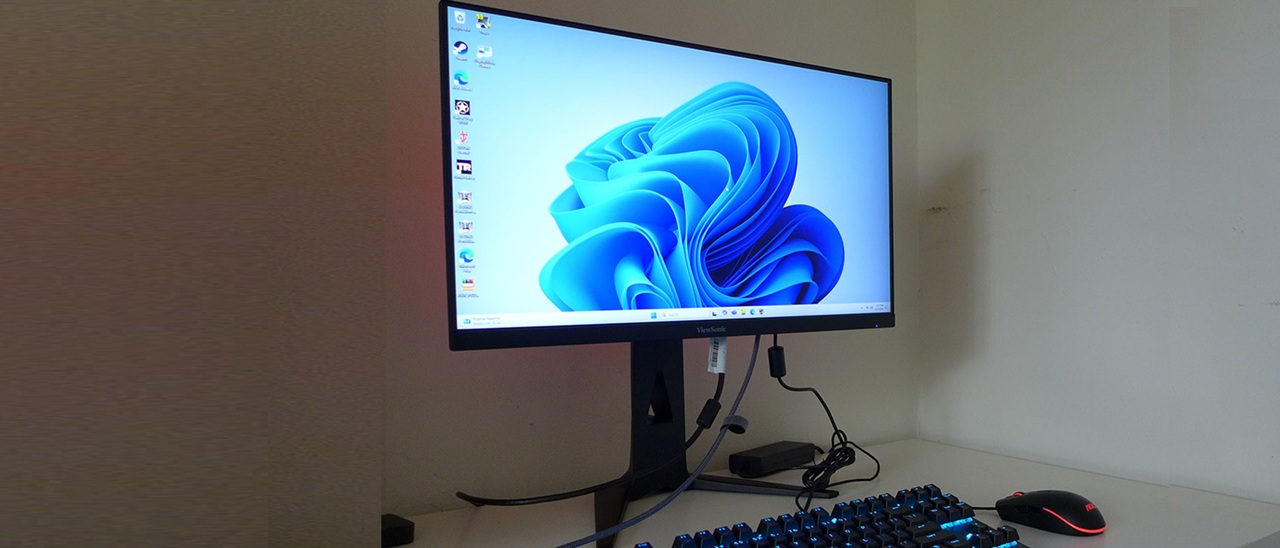Why you can trust Tom's Hardware
The XG2536 is a very straightforward gaming monitor from a color standpoint. It doesn’t have a wide gamut so its story can be told with a single color mode, Game Custom. It measures well out of the box and improves slightly with calibration.
Grayscale and Gamma Tracking
Our grayscale and gamma tests use Calman calibration software from Portrait Displays. We describe our grayscale and gamma tests in detail here.
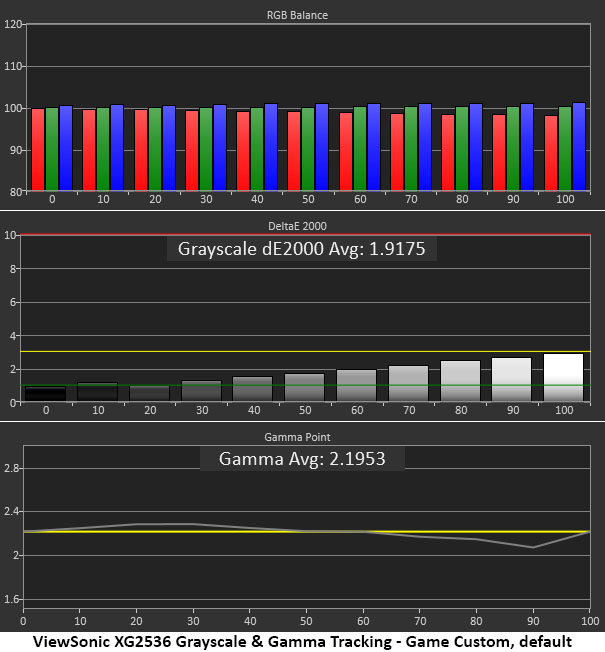
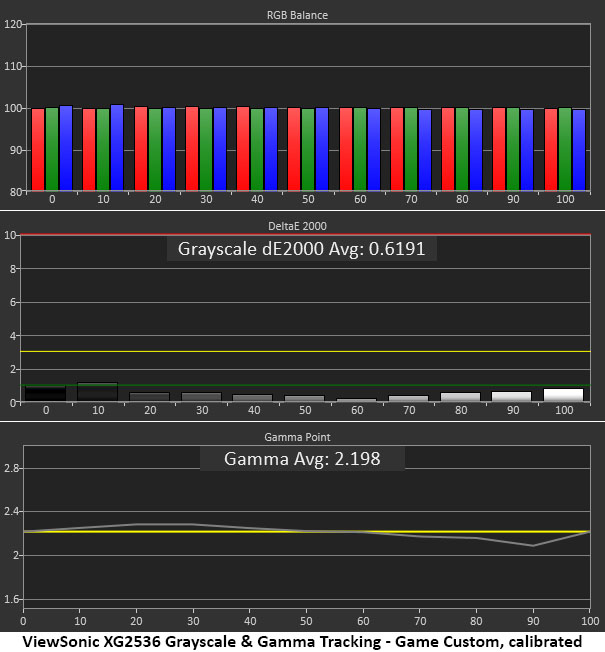
The XG2536’s default chart shows a slight cool tone that’s not visible to the naked eye. With errors all below the 3dE threshold, you won’t see a problem here. Gamma rides around the 2.2 reference with a slight dip at 90% brightness. This value is too light, but the error is quite small.
Calibration tightens up grayscale tracking to where only the 10% step is above 1dE. Gamma remains the same which is visually perfect. This is excellent performance.
Comparisons
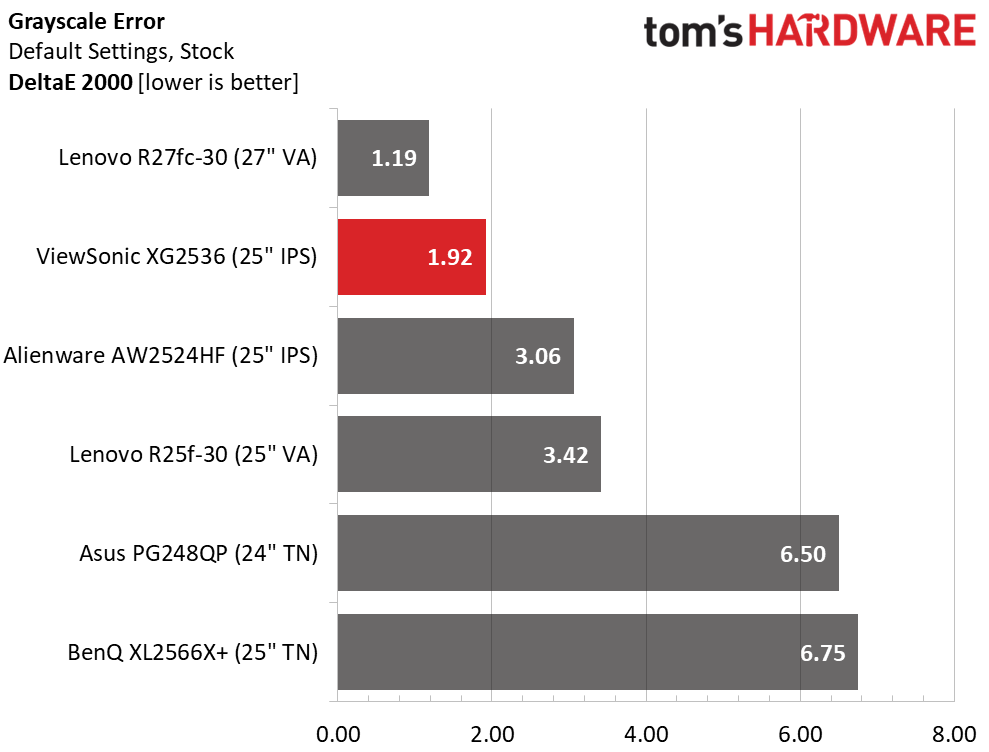

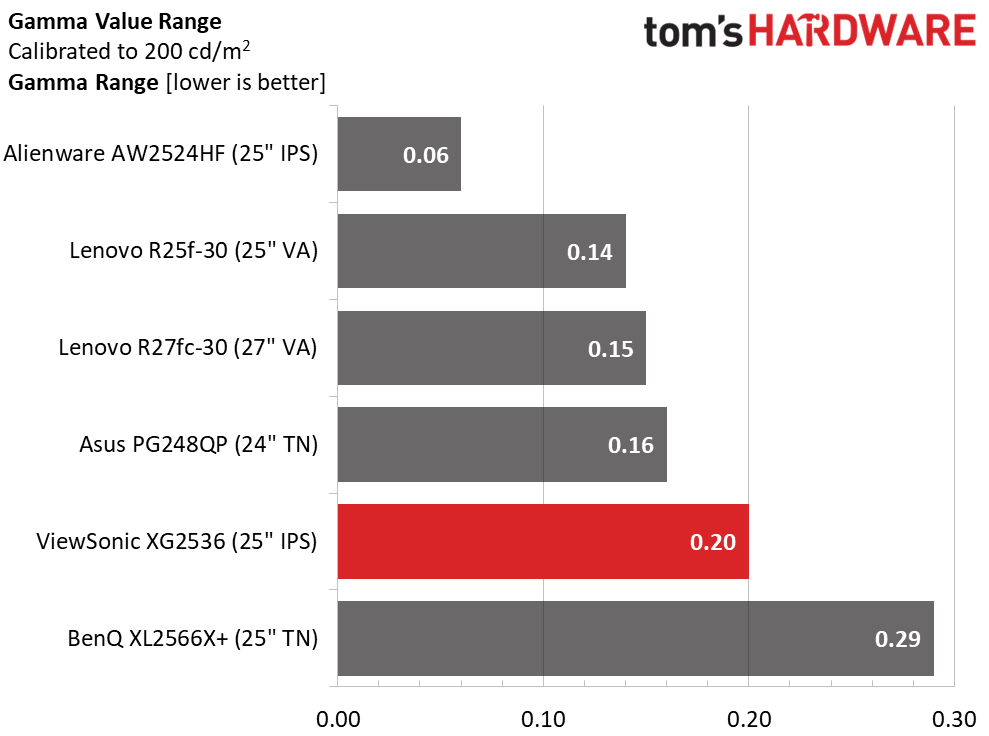
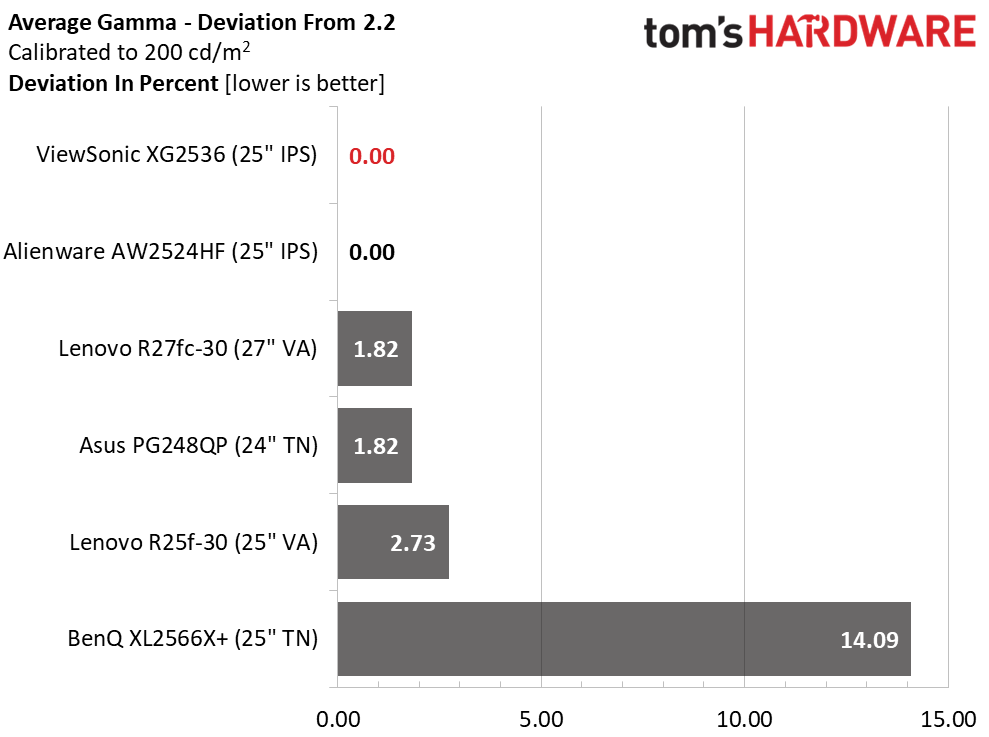
With a default grayscale error of 1.92dE, the XG2536 can be enjoyed without calibration. You won’t see any grayscale errors in test patterns or real-world content. Calibration makes a tiny improvement that is mostly detectable by the meter rather than the human eye. Adjustment puts it in a tie for first with the R27fc-30 at 0.62dE.
Gamma tracks extremely well with a 0.20 range of values and a 0% deviation from 2.2. It is on par with the other screens except for the Alienware which is pretty much perfect in this test.
Color Gamut Accuracy
Our color gamut and volume testing use Portrait Displays’ Calman software. For details on our color gamut testing and volume calculations, click here.
Get Tom's Hardware's best news and in-depth reviews, straight to your inbox.
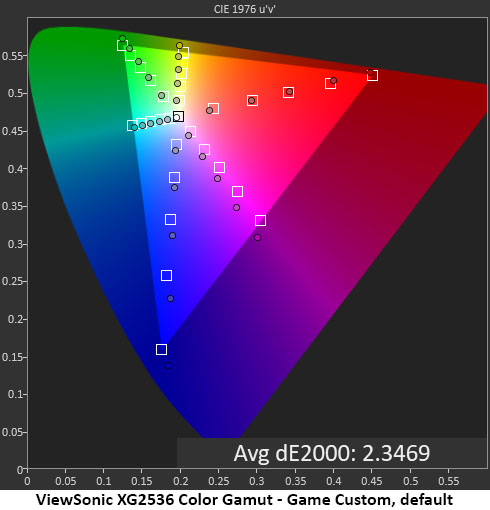
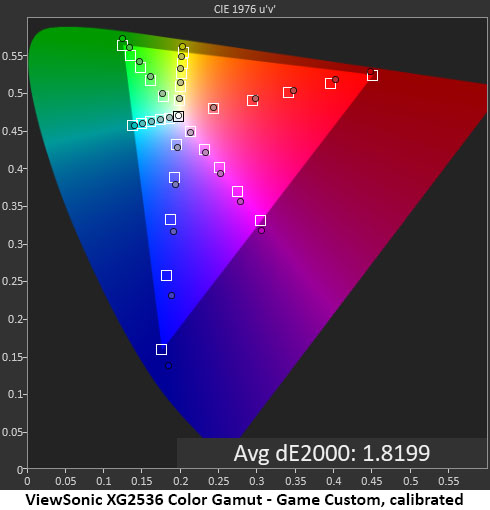
The XG2536 has a single color gamut which I would call sRGB+. It has a little bonus blue and green but not enough to cause visible inaccuracy. In the default chart, you can see slight hue errors in the magenta and yellow secondaries. These are mitigated with a grayscale calibration. You can also see a bit of general oversaturation. This serves to make color nice and vivid without straying too far off the mark.
Comparisons
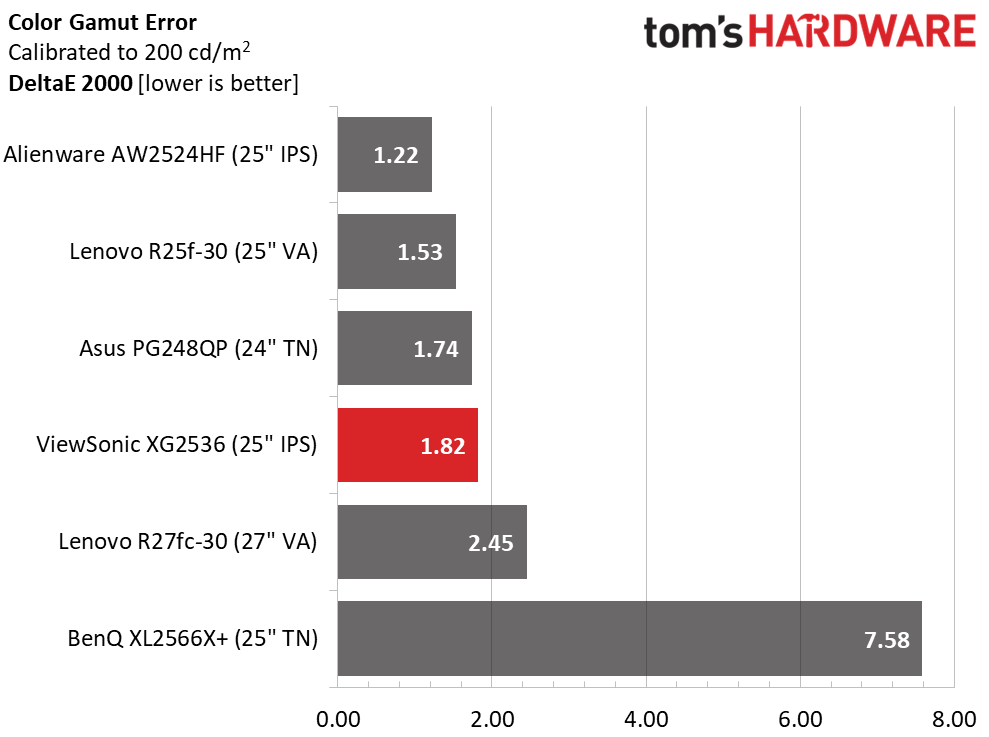
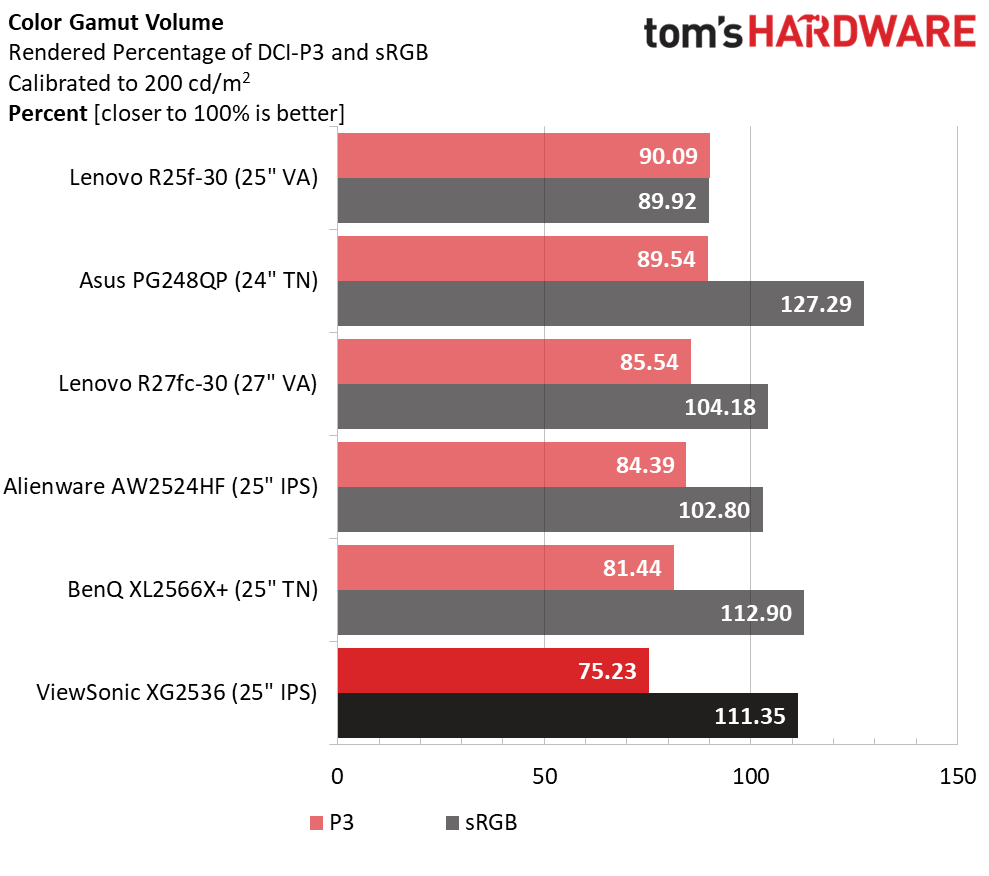
Calibration reduces the XG2536’s color gamut error from 2.35 to 1.82dE, a very tiny amount. Adjustment is strictly optional; the monitor looks great right out of the box.
In the gamut volume test, the lack of DCI-P3 becomes evident. Though wide gamuts aren’t common in the speedy monitor genre, the other screens are more colorful in their native states.
Test Takeaway: The XG2536 has very accurate color that is achieved right out of the box, no calibration needed. It has a bit less gamut volume than the competition but still looks bright and vibrant. There are more colorful displays available, but they won’t be as quick or responsive.
MORE: Best Gaming Monitors
MORE: How We Test PC Monitors
MORE: How to Buy a PC Monitor
Current page: Grayscale, Gamma and Color
Prev Page Brightness and Contrast Next Page HDR Performance
Christian Eberle is a Contributing Editor for Tom's Hardware US. He's a veteran reviewer of A/V equipment, specializing in monitors. Christian began his obsession with tech when he built his first PC in 1991, a 286 running DOS 3.0 at a blazing 12MHz. In 2006, he undertook training from the Imaging Science Foundation in video calibration and testing and thus started a passion for precise imaging that persists to this day. He is also a professional musician with a degree from the New England Conservatory as a classical bassoonist which he used to good effect as a performer with the West Point Army Band from 1987 to 2013. He enjoys watching movies and listening to high-end audio in his custom-built home theater and can be seen riding trails near his home on a race-ready ICE VTX recumbent trike. Christian enjoys the endless summer in Florida where he lives with his wife and Chihuahua and plays with orchestras around the state.
-
cyrusfox Impressive cost per Hz, and super input lag.Reply
https://cdn.mos.cms.futurecdn.net/bd4a2pJ8tuxzFTUNUKBkfQ-1200-80.png.webpHow does you input lag testing compare to this one at RTINGS.comGuessing very different methodology as your values appear to be a bit longer/slower than what I would expect compared to what I see at their website. Would be interested if you could explain how you are performing the input lag test.
Thanks for the thorough review!
It appears the longer I hold out on my next monitor the better the choices continue to be. I was just at Costco and they had the MSI 170Hz 1440p for $150, was only 2 left, was tempted but no time for that past time at the moment. that one shows inputlag at RTING of this MSI monitor
Native Resolution @ Max Hz(170) 3.5 ms
I got rid of my 165/180hz 1440 when I moved in December(LG G 27GP850-B), back to my old monitors I had in storage, an old 2018 4k 60hz IPS LG and widescreen 1440p 75hz VA (ick) Samsung panel right now, for work they are better than the laptop screen, haven't even got my desktop rig powered up yet.
Native Resolution @ 120Hz 4.7 ms
Native Resolution @ 60Hz 8.8 ms
Backlight Strobing (BFI) 6.9 ms
